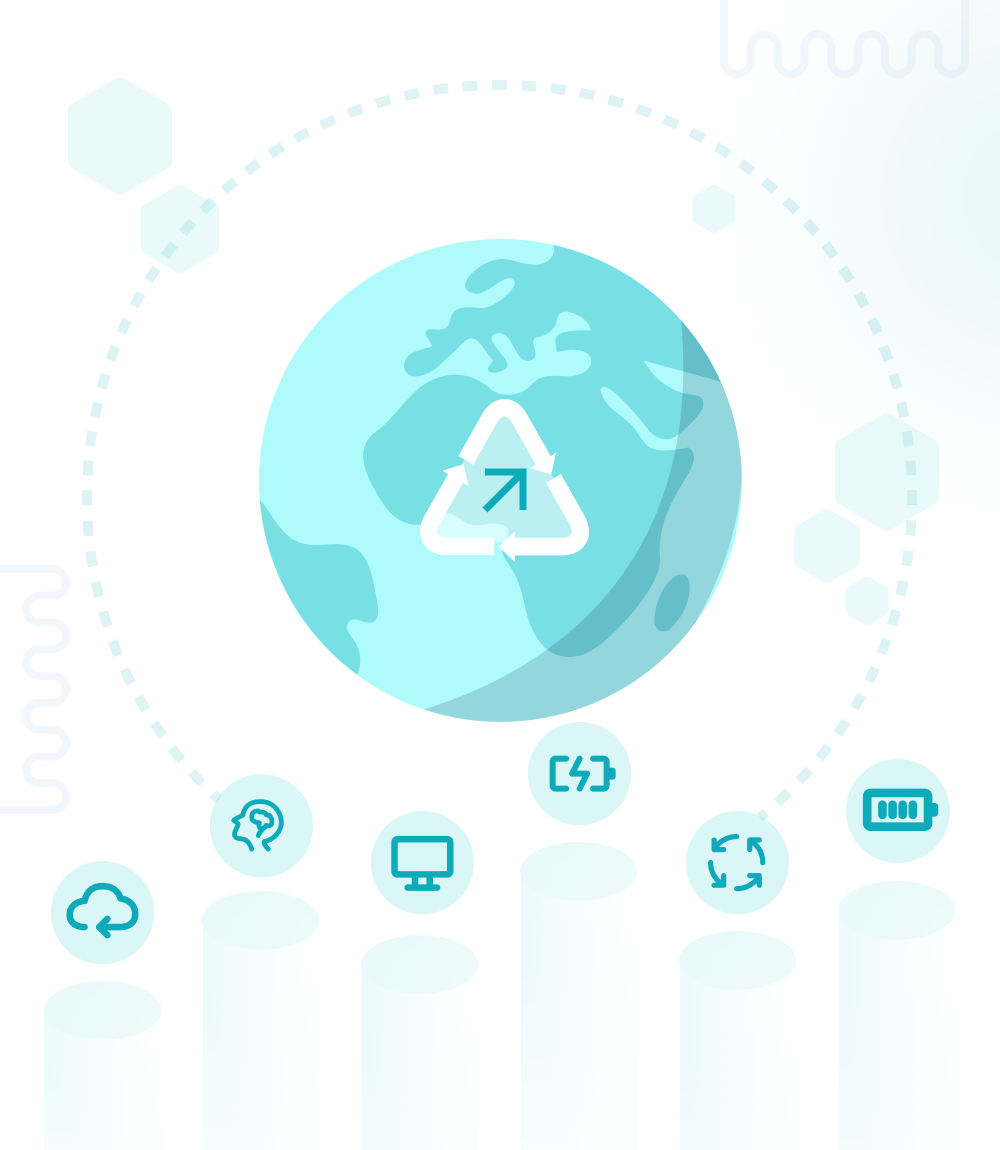Sustainability has become a priority for individuals and companies worldwide. The world is fighting the climate crisis and global warming, so it's no longer just a buzzword. We need real action today like never before. In the IT industry, adopting sustainable practices is essential to reduce energy consumption, minimize waste, and lower our overall impact on the environment. Here are some useful tips on how to be more sustainable in the IT industry, organized into six categories.

The IT industry continually pushes the boundaries of innovation, integrating advanced technologies into nearly every aspect of our lives. As a result, technology companies have a significant responsibility to prioritize sustainability and minimize their environmental impact. Although computing has become more energy-efficient compared to a decade ago, the widespread use of computing tools has led to an overall increase in energy consumption.
To address this challenge, the IT industry must develop solutions that balance the growing needs of society with energy efficiency. This approach involves creating new algorithms and software that not only cater to the evolving demands of users but also contribute to a greener and more sustainable future.
Committing to change: Reducing impact through sustainable IT solutions
The IT industry plays an essential role in shaping our world, but its rapid growth also brings the pressing need for sustainable practices. As we pursue a greener future, technology companies must take decisive action to minimize their environmental impact.
This article delves into six crucial categories that cover a range of strategies and techniques for achieving increased sustainability: power management, data center efficiency, cloud computing, remote work, recycling and repurposing, and individual actions that promote green IT. By adopting these practices, we can collaboratively build a more sustainable IT industry, reduce the environmental impact of our technological advancements, and foster a greener future for all.

Sustainable software development
Let's start with what concerns us as Primotly the most. Developing software in a sustainable manner can help reduce energy consumption and contribute to a greener IT industry. Here are some ways to achieve this:
Optimize software performance: Develop energy-efficient software by focusing on performance optimization and reducing resource usage.
Adopt cloud computing: Migrate on-premise applications and storage to the cloud, reducing direct energy consumption and carbon emissions.
Utilize machine learning for energy efficiency: Apply artificial intelligence and machine learning to identify and optimize energy consumption patterns in software development processes.
Energy-efficient data centers
Data centres are essential to the IT industry, but they consume a significant amount of energy. Implementing energy-efficient practices in data centres can help reduce their environmental impact. Some strategies include:
Optimize data centre temperature: Ensure proper cooling to prevent overheating and reduce energy consumption. Aim for a Power Usage Effectiveness (PUE) of 1.2 or lower.
Use renewable energy sources: Transition to clean, renewable energy sources such as solar or wind power for your data centres.
Consolidate and virtualize storage: Increase energy efficiency by consolidating and virtualizing storage, reducing the number of physical devices needed.

Green IT purchasing and lifecycle management
An even more obvious direction of change is what is happening to the hardware used in organizations. Choosing eco-friendly products and managing the lifecycle of electronic devices responsibly can have a significant positive impact on the environment. Consider the following recommendations:
Choose eco-friendly products: Purchase electronic devices from manufacturers with strong environmental policies and certifications.
Consider device lifespan: Opt for devices with longer lifespans and upgradable components, reducing the need for frequent replacements.
Plan for end-of-life disposal: Establish responsible disposal plans for electronic devices at the end of their life cycle.
Waste recycling and electronic waste management
Electronic waste is a growing concern, and proper recycling and waste management practices are crucial to mitigating its harmful effects on the environment. Here are some steps you can take:
Recycle electronic devices: Properly recycle or donate old devices, preventing harmful materials from entering landfills.
Implement waste recycling programs: Establish company-wide recycling programs for electronic waste, including printer cartridges, batteries, and paper.
Dispose of sensitive information securely: Remove sensitive data from old storage devices before recycling or donating them.

Promote sustainable IT practices
It all starts with small decisions. If we collectively look for solutions, small decisions turn into real results. Creating a culture of sustainability within your organization can lead to lasting positive change. Encourage sustainable IT practices by following these tips:
Educate employees on green IT: Train staff on the importance of sustainable IT practices and ways to reduce energy consumption.
Share resources: Encourage sharing of electronic devices, such as printers and projectors, among team members to reduce the overall number of devices needed.
Set sustainability goals: Establish measurable targets for energy consumption, waste reduction, and other sustainability initiatives.
Reduce energy consumption in devices
Electronic devices are everywhere, and they can consume a considerable amount of energy. By adopting energy-saving practices for these devices, we can minimize their environmental impact. Some suggestions include:
Implement power management settings: Enable power-saving features on electronic devices, such as sleep mode and automatic shutdown.
Upgrade to energy-efficient devices: Replace older, less efficient devices with newer, energy-saving models.
Encourage remote work: Reduce energy consumption in office spaces by promoting remote work, cutting down on commuting emissions.
Minimizing environmental footprint: reducing impact in the IT sector
Adopting sustainable practices in the IT industry can significantly reduce our environmental impact and contribute to a greener future. It's essential to prioritize sustainability in every aspect of our operations as technology continues to evolve. Energy-efficient data centers and sustainable software development present numerous opportunities to make a difference.
By promoting green IT practices within your organizations and educating employees on the importance of sustainability, we can inspire positive change across the industry. Collaborating together, we can create a more sustainable IT landscape and contribute to a brighter, greener future for all.





















